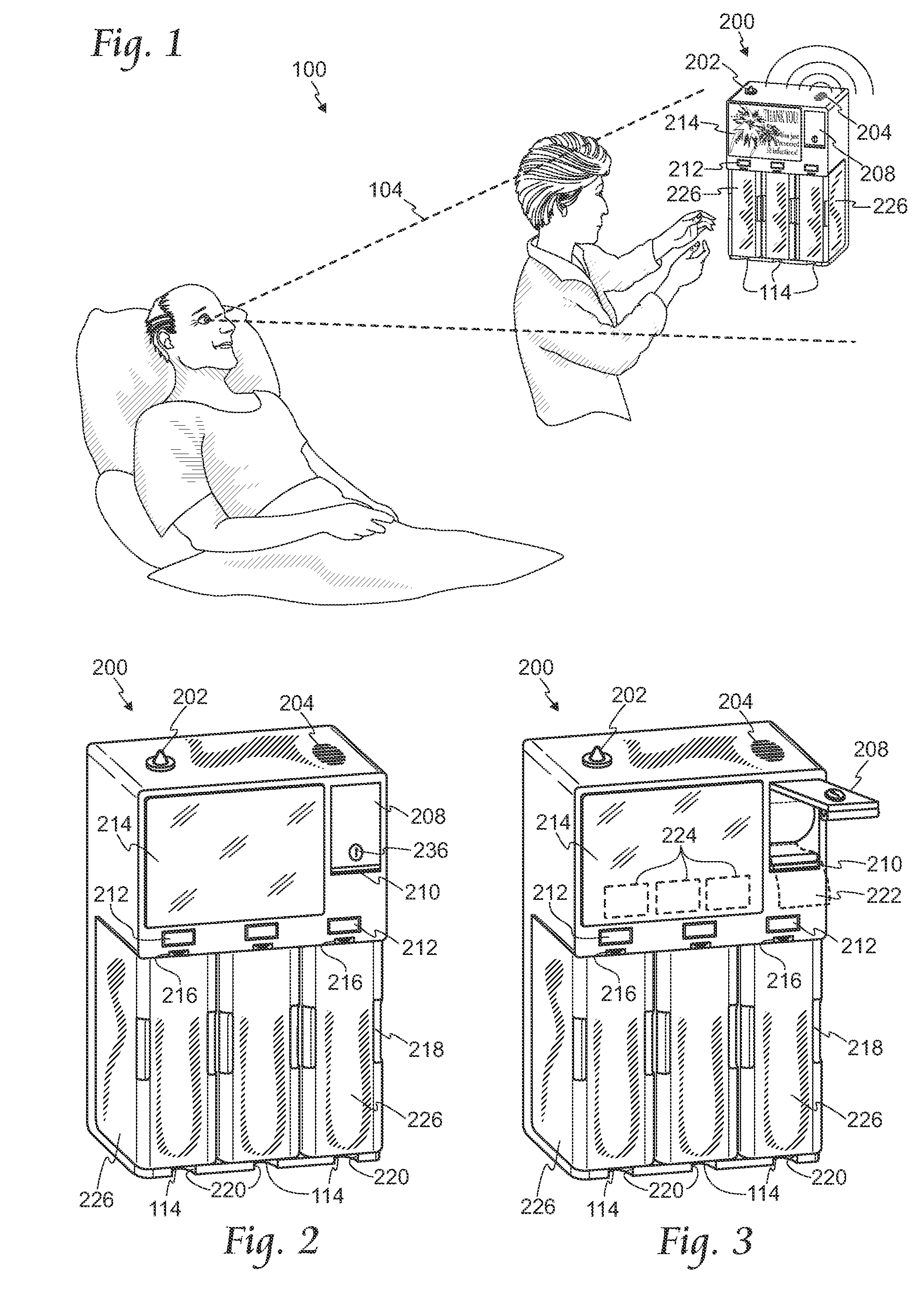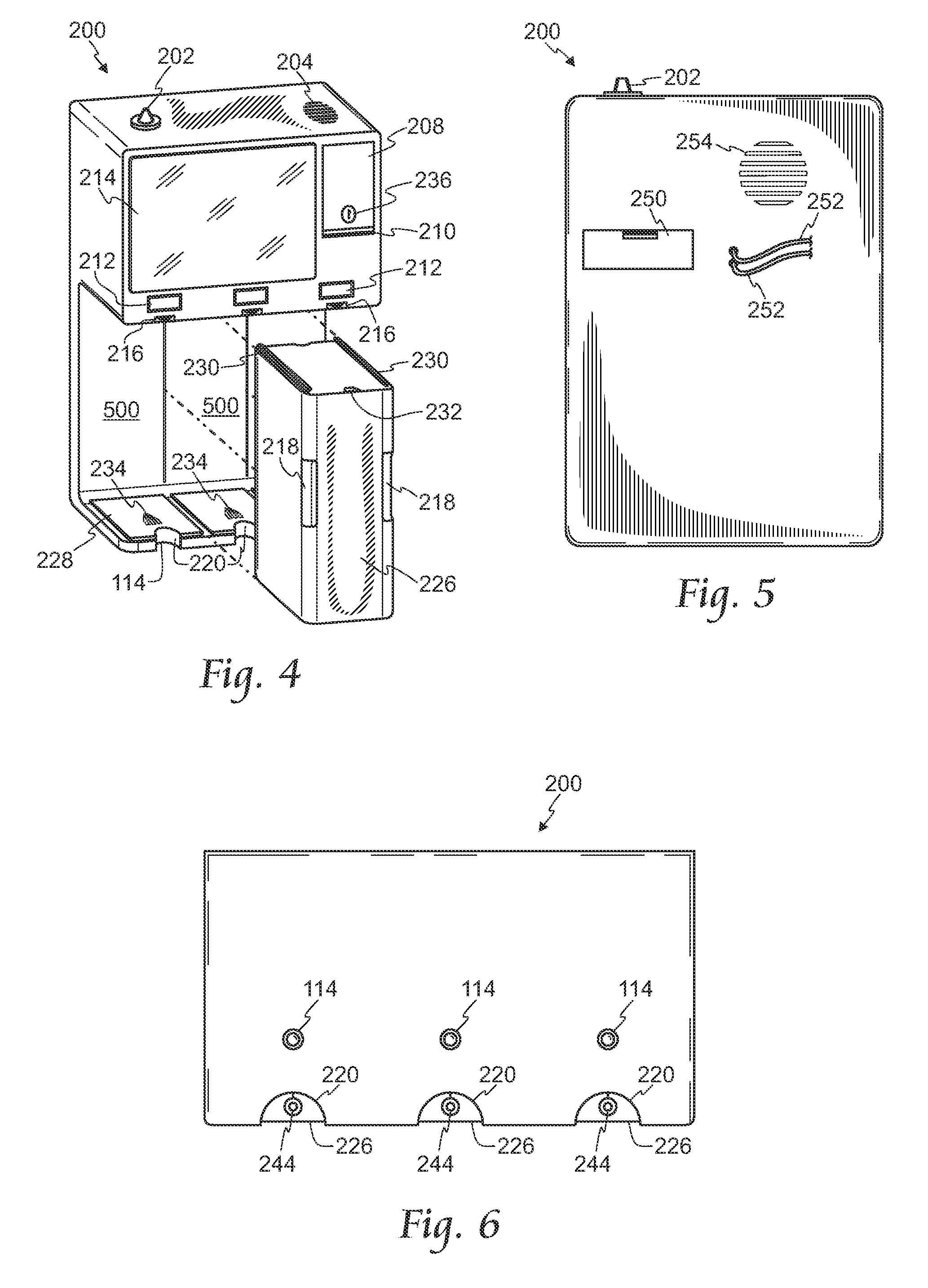System and method for positively reinforcing hand-hygeine compliance
a hand hygiene and positive reinforcement technology, applied in the field of infection reduction systems, can solve the problems of increasing the length of hospitalization, extending the hospitalization time, and causing significant health risks to hospitalized patients, so as to reduce infection, improve hand hygiene compliance, and reinforce hand hygiene.
- Summary
- Abstract
- Description
- Claims
- Application Information
AI Technical Summary
Benefits of technology
Problems solved by technology
Method used
Image
Examples
Embodiment Construction
[0043]It is to be understood that the descriptions below are merely illustrative of the presently preferred embodiments of the invention and that no limitations are intended to the detail of construction or design herein shown other than as defined in the appended claims.
[0044]For the purposes of this invention, the term “hand-hygiene station” refers to a device that can do one or more of the following: automatically manage employee identification, dispense hand hygiene products, issue rewards, and / or involve an observer, such as a patient or employee, visually and audibly, in an educational or purposeful way. The term “infection-reduction system” refers to a system that can reduce the transmission and amount of infectious organisms. The term “hand-washing identification system” refers to a system that automatically records use of the “hand hygiene station.” The term “employee identification system” refers to a system that automatically detects the identity of the person using the “...
PUM
 Login to View More
Login to View More Abstract
Description
Claims
Application Information
 Login to View More
Login to View More - R&D
- Intellectual Property
- Life Sciences
- Materials
- Tech Scout
- Unparalleled Data Quality
- Higher Quality Content
- 60% Fewer Hallucinations
Browse by: Latest US Patents, China's latest patents, Technical Efficacy Thesaurus, Application Domain, Technology Topic, Popular Technical Reports.
© 2025 PatSnap. All rights reserved.Legal|Privacy policy|Modern Slavery Act Transparency Statement|Sitemap|About US| Contact US: help@patsnap.com



